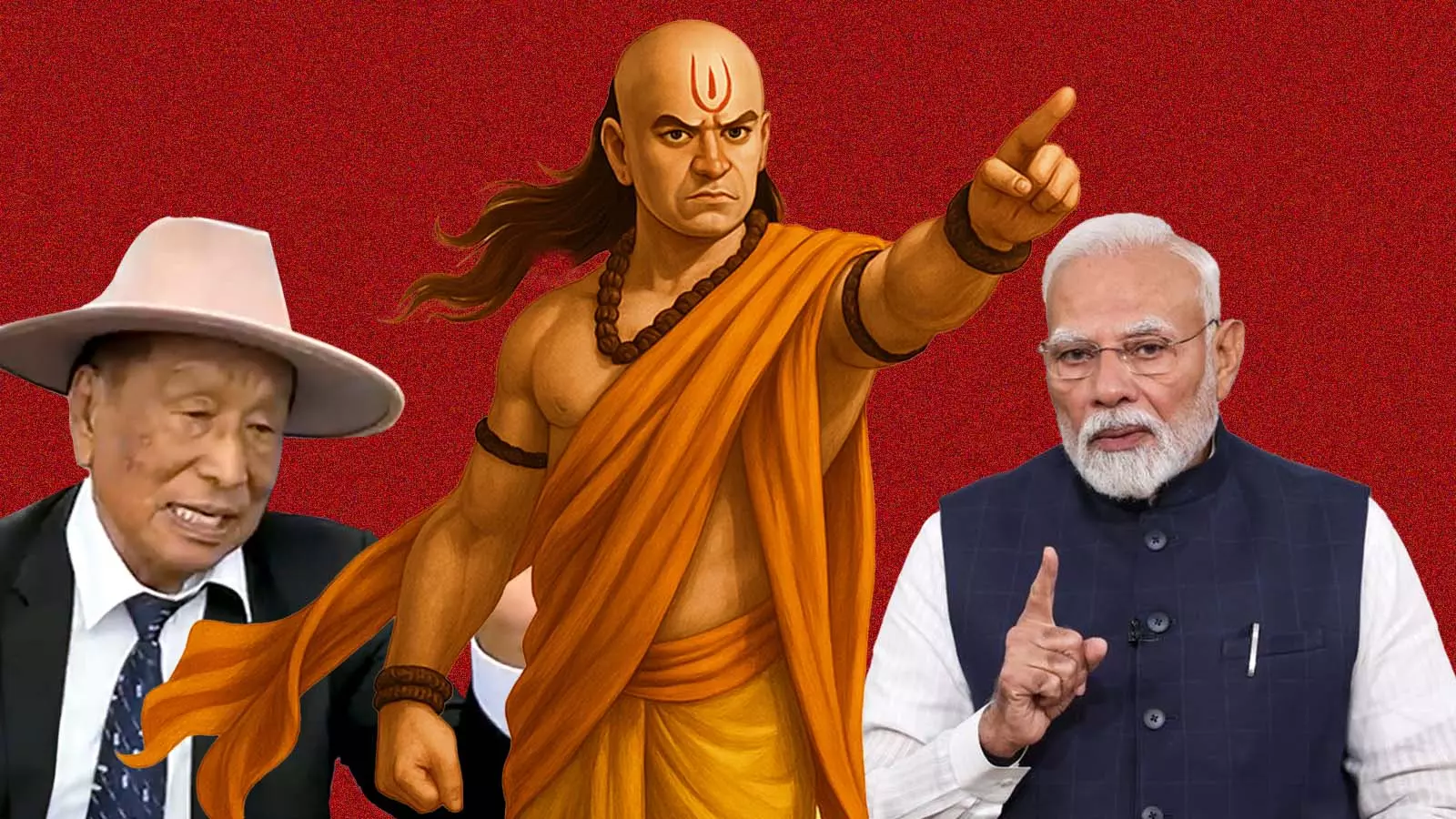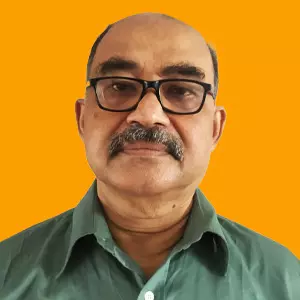
- Home
- India
- World
- Premium
- THE FEDERAL SPECIAL
- Analysis
- States
- Perspective
- Videos
- Sports
- Education
- Entertainment
- Elections
- Features
- Health
- Business
- Series
- In memoriam: Sheikh Mujibur Rahman
- Bishnoi's Men
- NEET TANGLE
- Economy Series
- Earth Day
- Kashmir’s Frozen Turbulence
- India@75
- The legend of Ramjanmabhoomi
- Liberalisation@30
- How to tame a dragon
- Celebrating biodiversity
- Farm Matters
- 50 days of solitude
- Bringing Migrants Home
- Budget 2020
- Jharkhand Votes
- The Federal Investigates
- The Federal Impact
- Vanishing Sand
- Gandhi @ 150
- Andhra Today
- Field report
- Operation Gulmarg
- Pandemic @1 Mn in India
- The Federal Year-End
- The Zero Year
- Science
- Brand studio
- Newsletter
- Elections 2024
- Events
- Home
- IndiaIndia
- World
- Analysis
- StatesStates
- PerspectivePerspective
- VideosVideos
- Sports
- Education
- Entertainment
- ElectionsElections
- Features
- Health
- BusinessBusiness
- Premium
- Loading...
Premium - Events

The Indian State has adopted strategies of Kautilya or Chanakya while dealing with the problem of armed insurgency, be it 'sham', 'dam', 'danda' or 'bhed'. For instance, it has decided to pursue the principle of 'sham' (dialogue) with the Thuingaleng Muivah (left) faction of the NSCN which has shown little inclination to go back to the jungles and fight.
Drone strike on NSCN- K(YA) in Myanmar and Thuingaleng Muivah's homecoming highlight contrasting statecraft using force and dialogue to tackle armed insurgency
Nothing highlighted the contrasting policy options that India makes use of in handling different strands of armed insurgency, than the events this month involving various Naga rebel groups.
In fact, these contrasting choices are part of a package suggested by the legendary strategist, Kautilya or Chanakya, who prescribed 'sham' (reconciliation, dialogue), 'dam' (monetary inducement), 'danda' (force) and 'bhed' (split, creating divisions) to handle rebellions.
On the one hand, there was a use of substantial force to handle a Naga rebel faction that continues to attack Indian forces. In fact, the massive drone strike on a base of the National Socialist Council of Nagaland's (NSCN) (Khaplang-Yin Aung faction) (K-YA) inside Myanmar came within two days after its guerrillas ambushed a patrol of the paramilitary Assam Rifles in the Changlang district of Arunachal Pradesh on Oct 16.
'Sham' with Muivah, no longer an enemy
On the other hand, the Naga rebel leader Thuingaleng Muivah, who has been leading negotiations with the Indian government since 1997, was facilitated to visit his birthplace in Manipur's Ukhrul district six decades after he had left his ancestral village to join the Naga insurgent movement.
The message is clear — if you choose to fight the State, you face the condign apparatus, but if you wish to strike a deal within the constitutional parameters, the State is always willing. Both iron fist and velvet glove are on the table — it is what the rebels choose.
Muivah, 91, received a hero's welcome as he flew into Ukhrul town in a helicopter and then to his native Somdal village. The man, who had trekked hundreds of kilometres through dense jungles in the past, was limping as he got off the helicopter. Age had clearly caught up.
Also read: NSCN-IM chief Muivah returns to native Manipur village after 60 years | Ground Report
Muivah is the Naga rebel leader who led the first batch of Naga rebels to China for training and weapons in 1966. He is also the one who torpedoed the 1975 Shillong Accord signed by the Naga National Council (NNC) with the Indian government and continued the armed Naga insurgency by forming the breakaway NSCN.
But since he started negotiations with Delhi in 1997, Muivah is no longer considered anti-national. He is yet to sign a final settlement with India, 10 years after his group signed the 2015 Framework Agreement with the Narendra Modi government. The talks are stuck over differences in interpreting the agreement and the concept of 'shared sovereignty'. But since he is negotiating and has shown no inclination to take his fighters back to the jungles, he is no longer the enemy of the state.
This highlights the use of Kautilyan principles of statecraft by successive governments in post-colonial India, in which persuasion and dialogue are prioritised in handling armed secessionist or revolutionary movements and force is used as the last, not the first option, primarily to 'soften up' the armed movement and make them join the dialogue with the government.
Also read: Thaw in Naga peace process as Centre seeks damage control post Manipur
So, while India pursues 'sham' with the NSCN's Muivah faction, it would adopt the 'danda' strategy with the group's K-YA faction, which continues to attack Indian forces. And the repeated splits in the Naga insurgent movement since the 1960s (the NSCN alone has five factions now) point to the use of 'bhed' in weakening an insurgent movement.
'Danda' against NSCN-K (YA)
Immediately after the ambush on the Assam Rifles patrol, the Indian defence forces carried out a drone strike on Kammoi village in Myanmar, located adjacent to Longwa village along the border. The strike is said to have targeted the residence of Piyong Konyak, the major general of the NSCN-K (YA). Several NSCN-K (YA) cadres were reportedly killed in the attack, including Konyak’s son and granddaughter, while he and his wife sustained critical injuries.
This nuanced Indian strategy stands in stark contrast to Pakistan's military solution. In 1971, Pakistani generals would openly brag that killing a few lakh Bengalis would silence the protests in the country's eastern wing. They ended up losing half the country.
A similar drone strike on a Myanmar base of Assam's separatist United Liberation Front of Asom's (ULFA) Independent faction in July killed the group's top leader Nayan Medhi and a few of his bodyguards. India has hit the northeastern rebel bases in Myanmar’s Sagaing region regularly for the last 30 years by resorting to trans-border commando raids. But the success of such raids was limited — rarely did it lead to the death of senior rebel leaders.
Drone strikes more effective
But drone attacks are qualitatively different. They are precision strikes based on quality intelligence procured from multiple sources and collated with versions of surrendered rebels. They also carry the element of deniability because the Myanmar Army is busy fighting too many insurgent groups and has little interest in Indian drone attacks on some insurgent bases on the border.
Also read: Nikhil J Alva interview: ‘Lack of dialogue root cause of insurgencies’
Also, the casualties throw the rebels into panic because successful drone strikes prove they are watched from the sky with no place to hide.
Facilitating Muivah's visit to his ancestral village in the same week when the Khaplang group base in Myanmar was hit by combat drones sends a clear signal to all rebel groups in the northeast and elsewhere.
Co-opting through Kautilya's 'dam'
The ULFA or the Bodo rebel leaders who negotiated deals with India are slowly co-opted into the polity — they can contest polls and become ministers or head autonomous councils, which gives them access to government funds. That is where Kautilya's 'dam' strategy comes into play.
The whole strategy of counter-insurgency starts with 'danda', graduates to 'sham' as dialogues replace fighting. Meanwhile, differences within rebel groups are exploited to let 'bhed' play out, weakening the striking capability of the armed insurgents. Finally, when inducted into power structure through accords, 'dam' plays its role in co-opting rebels into the body polity.
Fight or make peace: It's rebels' choice
In one counter-insurgency theatre after another in post-colonial India, this Kautilyan paradigm has played out to control and end armed rebellions. The message is clear — if you choose to fight the State, you face the condign apparatus, but if you wish to strike a deal within the constitutional parameters, the State is always willing. Both iron fist and velvet glove are on the table — it is what the rebels choose.
Also read: Insurgency: BJP bluster belies ground reality in Manipur
Thus, Maoist leader Koteswar Rao alias Kishenji dies fighting the police, but when his brother Venugopal Rao surrenders with 60 armed cadres, a top company shows willingness to hire him as its brand ambassador. Not to mention the rehabilitation package.
Different from Pakistan's 1971 strategy
This nuanced Indian strategy stands in stark contrast to Pakistan's military solution. In 1971, Pakistani generals would openly brag that killing a few lakh Bengalis would silence the protests in the country's eastern wing, now Bangladesh. They ended up losing half the country, as the armed rebellion spread with Indian support.
The lesson is clear — internal dissent, which creates insurgencies, cannot be silenced by military overkill. They require political solutions that can be achieved only through dialogue and reconciliation. Strict timelines and tall claims don't work — patience does.
(The Federal seeks to present views and opinions from all sides of the spectrum. The information, ideas or opinions in the articles are of the authors and reflect the views of The Federal.)


